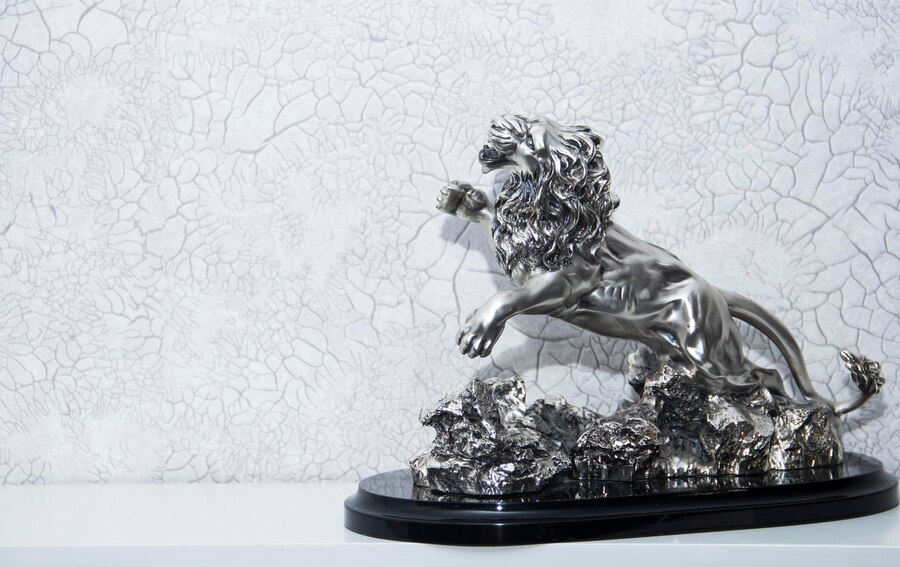
Metalwork combines industrial techniques and visual artistry to help individuals create unique metal forms.
Artists have used metal throughout history to create masterpieces that capture human expression and emotion.
Metallurgy, the science and art of working with metals, has played a pivotal role in shaping the world of art and sculpture.
Also, metalwork includes various processes such as welding, forging, casting, and engraving that offer limitless opportunities for design and creation.
The adaptability of metal as a medium allows artists to explore diverse textures, shapes, and finishes. This helps them manifest their ideas in three-dimensional form.
Moreover, the modern home decor and abstract art industries shifted their concentration to custom metal works to add beauty and art to homes.
This blog will examine how the transformational power of metal has allowed artists to realize their creative visions through the discipline of metallurgy.
The History Of Metallic Art

Metallurgy is a fascinating field that has been around for thousands of years, since the early days of human civilization.
Ancient societies like the Egyptians, Greeks, and Romans pioneered using metals such as bronze, iron, and steel to create practical and artistic objects.
The development of metallurgical techniques allowed for the casting and forging of metal. This enabled the creation of intricate shapes and designs.
Consequently, iconic sculptures like the Statue of Liberty and the Winged Victory of Samothrace emerged.
Being both malleable and durable, Bronze played a crucial role in art history.
This evidence is evident in ancient sculptures like “The Dying Gaul.” The piece showcased the remarkable talent of artists in transforming ordinary metal blocks into lifelike human forms.
Techniques For Metal Sculpting
Metallurgy is an age-old technique that has allowed artists to create magnificent works by manipulating metals into various forms, textures, and finishes.
The art of sculpting metal has been practiced for centuries and involves a range of key techniques such as casting, welding, forging, and patination that bring out the beauty of metal in unique ways.
Casting
Casting, for instance, involves pouring molten metal into a mold to create intricate shapes with fine details.
This technique is perfect for replicating complex designs and can create large sculptures or small decorative pieces.
Welding
Welding, on the other hand, involves joining metal pieces using heat. This technique is often used in abstract and modern sculptures. It helps create unique textures and shapes that can be both bold and intricate.
Forging
Forging is another technique that involves shaping metal using force and heat. Blacksmiths have used this technique for centuries to create various tools, weapons, and decorative pieces.
Moreover, this technique involves heating the metal until it is malleable and then shaping it with a hammer or other tools.
Patination
Finally, using chemicals and heat, the patination technique adds color and texture to metal surfaces.
This technique creates a distinctive appearance ranging from a rich, dark, and lustrous patina to a bright, colorful finish. However, artists use it to create various effects that enhance the beauty of their metal sculptures.
Modern Tools For Metal Sculpting

Given below are some of the modern-age techniques that gave sculpting a new edge—
1. Plasma Cutting
Plasma cutting is one of the most modern techniques used by welders who repair heavy machinery. However, it is also a big part of metallic art creators.
Plasma cutters can cut through most metal alloys, making them perfect for creating perfect circles with the right accessories.
For beginners, working with thin metal alloys, such as sheet steel, which is easy to cut, is recommended.
Therefore, to create metal art, have a design ready on paper or cardboard. Next, you can use paper or cardboard to guide and secure the metal sheet onto a stable surface.
Furthermore, artists must follow the lines of design with the plasma cutter, wearing appropriate safety gear like gloves and goggles.
Place a template on top of the metal and use the plasma cutter to cut around the edges of the template. Artists use a 15-degree angle when using plasma cutters to ensure precise cuts.
2. CNC Machines
Stamping dies are an essential tool for working with sheet metal that enables the creation of a vast array of products, from everyday kitchen tools like filters, cooking pots, and pot covers to intricate and delicate metal jewelry and accessories.
These precision tools are created using CNC machines. Additionally, these machines help mold and shape metal alloys to specific shapes and sizes. This allows cutting and forming operations with high accuracy and efficiency.
Stamping dies are particularly useful in metalworking. They can easily create complex and intricate designs, making them ideal for artists and artisans who want to produce unique and functional products.
However, whether you’re working on a large-scale manufacturing project or creating a one-of-a-kind piece of art, stamping dies are a versatile and effective solution for shaping sheet metal into precise and beautiful forms.
3. Cutting Torches
Cutting torches have many uses in car repair and maintenance shops. These versatile tools are essential for welding procedures and removing excess material from existing parts.
Oxyfuel, a mixture of Acetylene and Oxygen, creates a high-temperature flame that can be controlled precisely.
Cutting torches are essential tools in metalworking for creating intricate metal sculptures and joining different alloys together.
They generate intense heat that melts metal into a liquid, allowing different alloys to combine. Once cooled, these alloys form a solid, fused state, which can be difficult to separate.
A cutting torch is often the only tool capable of separating fused alloys. These torches are ideal for welding and cutting metal, offering a range of creative possibilities for sculptors and metal artisans to create complex and intricate works of art.
Final Thought
Throughout history, metal has been a vital tool for artists and sculptors, shaping their creative visions with precision and beauty.
From ancient civilizations’ statues to contemporary artists’ avant-garde sculptures, metal has left an indelible mark on the art world.
The fusion of science and art can create enduring masterpieces. Metal sculpture requires precision and a deep understanding of the medium, often involving techniques like welding, casting, and forging.
Metal’s durability and versatility allow sculptures to withstand the test of time, ensuring their beauty can be appreciated for generations.
Moreover, metal is the fabrication of choice for some of the world’s most captivating art installations due to its practicality, simplicity, beauty, and malleability.
Artists, creatives, and professional metal fabricators collaborate to bring artistic visions to life by manipulating metals. They create works of art that inspire and provide joy to many people.
Read Also:




























